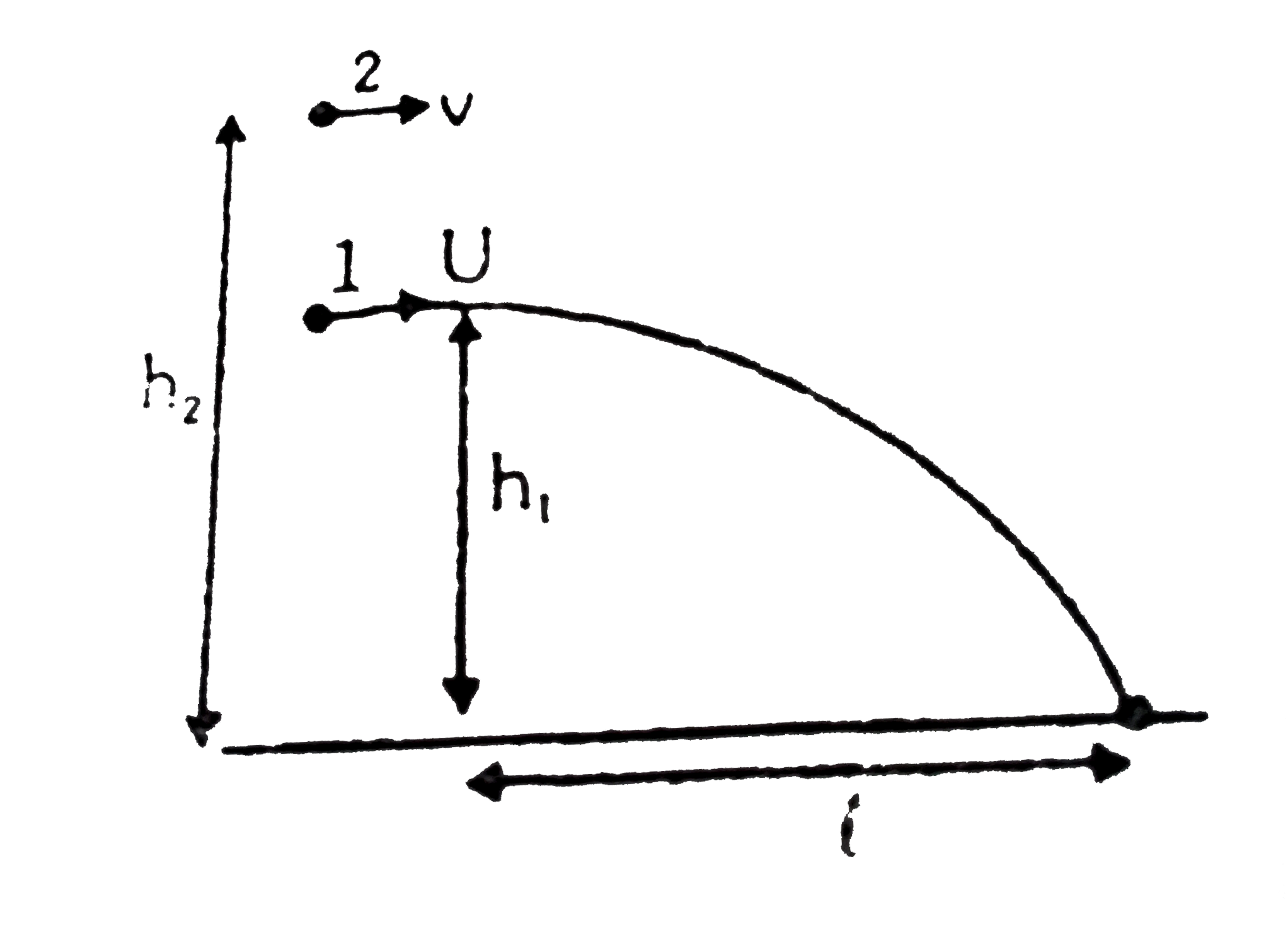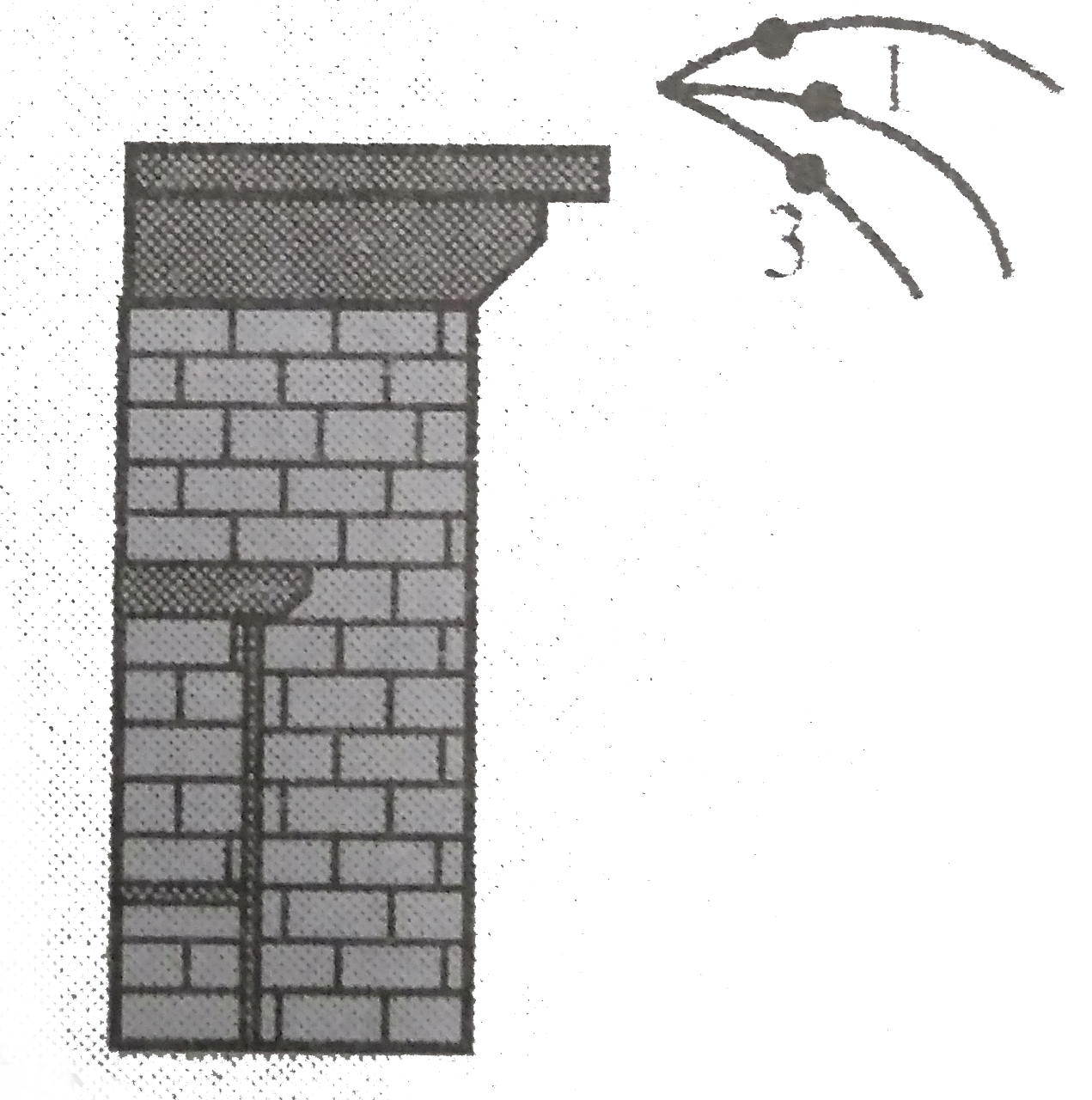Two small balls having the same mass and charge and located on the same vertical at heights and are thrown in the same direction along the horizontal at the same velocity v. The first ball touches the ground at a horizontal distance R from the initial vertical position. At what height will the second ball be at this instant? Neglect any frictional resistance of air and the effect of any induced charge on the ground. Solution in Gujrati
The correct Answer is:

Time to fall first ball
Height of 2nd ball
Topper's Solved these Questions
- MISCELLANEOUSBOOK - ALLEN CHAPTER - MISCELLANEOUSEXERCISE - Exercise-05(A)
35 Videos
- MISCELLANEOUSBOOK - ALLEN CHAPTER - MISCELLANEOUSEXERCISE - Exercise-05(B)
19 Videos
- MISCELLANEOUSBOOK - ALLEN CHAPTER - MISCELLANEOUSEXERCISE - Exersice-04[A]
34 Videos
- KINEMATICS (MOTION ALONG A STRAIGHT LINE AND MOTION IN A PLANE)BOOK - ALLEN CHAPTER - KINEMATICS (MOTION ALONG A STRAIGHT LINE AND MOTION IN A PLANE)EXERCISE - BEGINNER S BOX-7
8 Videos
- PHYSICAL WORLD, UNITS AND DIMENSIONS & ERRORS IN MEASUREMENT BOOK - ALLEN CHAPTER - PHYSICAL WORLD, UNITS AND DIMENSIONS & ERRORS IN MEASUREMENT EXERCISE - EXERCISE-IV
7 Videos
Similar Questions
On moving a charge of 20 coulomb by 2cm, 2J of work is done , the potential difference between the points is .
View SolutionA charge +q is fixed at each of the points x=x0, x=3x0, x=5x0,…………x=∞ on the x axis, and a charge −q is fixed at each of the points x=2x0, x=4x0, x=6x0, …………x=∞. Here x0 is a positive constant. Take the electric potential at a point due to a charge Q at a distance r from it to be Q/(4πε0r).Then, the potential at the origin due to the above system of
View SolutionThree particles, each of mass m and carrying a charge q each, are suspended from a common point by insulating mass-less strings each of length L. If the particles are in equilibrium and are located at the corners of an equilateral triangle of side a, calculate the charge q on each particle. Assume L>>a.
View SolutionA football player kicks a ball at an angle of 30∘ with an initial speed of 20 m/s. Assuming that the ball travels in a vertical plane, calculate (a) the time at which the ball reaches the highest point (b) the maximum height reached (c) the horizontal range of the ball (d) the time for which the ball is in the air, (g=10m/s2)
View SolutionAssertion : Gravitational forces do not depend on the medium between the masses.
Reason : Mediating particle responsible for gravitational force is graviton.
View SolutionThree identical balls are thrown from the top of a building, all with the same initial speed. As shown in figure., the first ball is thrown horizontally, second above horizontal level, and third at an angle below the horizontal. Neglecting air resistance, rank the speeds of the balls at the instant each hits the ground.

View SolutionTwo small balls having the same mass and charge and located on the same vertical at heights h_(1) and h_(2) are thrown in the same direction along the horizontal at the same velocity v. The first vall touches the ground at a horizontal distance R from the initial vertical position. At waht heigth h_(2) will the second ball be at this instant? Neglect any frictional resistance of air and the effect of any induced charge on the ground.
View SolutionTwo balls of equal masses are thrown along the same vertical direction at an interval of 2seconds, with the same initial velocity of 1 45 ms^(-1).Thentheseballscollataheightof(useg=10ms−2
View SolutionA ball P is dropped vertically and another ball Q is thrown horizontally with the same velocities from the same height and at the same time. If air resistance is neglected, then
View SolutionTwo particale of same mass and charge throw in same direction along the horizonal with same velocity v from two didffent heights h_(1) and h_(2) (h_(1)lth_(2)). Initially they were located in the same vertical line. Select the corredct alternative (s).
View SolutionTwo balls of equal masses are thrown upwards, along the same vertical direction at an interval of 2 seconds, with the same initial velocity of 40m//s . Then these collide at a height of (Take g=10m//s^(2) ).
View SolutionTwo balls of different masses are thrown vertically upward with same initial velocity. Maximum heights attained by them are h_(1) and h_(2) respectively what is h_(1)//h_(2) ?
View SolutionA ball projected from ground vertically upward is at same height at time t_(1) and t_(2) . The speed of projection of ball is [Neglect the effect of air resistance ]
View SolutionA ball of mass 1 kg is thrown vertically upward and returns to the ground after 3 second. Another ball, thrown at 60^(@) with vertical also stays in air for the same time before it touches the ground. The ratio of the two heights are
View SolutionA ball is dropped from a height of a building while another is thrown horizontally at the same instant. Do they touch ground simultaneously?
View SolutionA ball of mass 1 kg is thrown vertically upwards and returns to the ground after 3 seconds. Another ball, thrown at 60^@ with vertical also stays in air for the same time before it touches the ground . The ratio of the two heights are
View Solution
